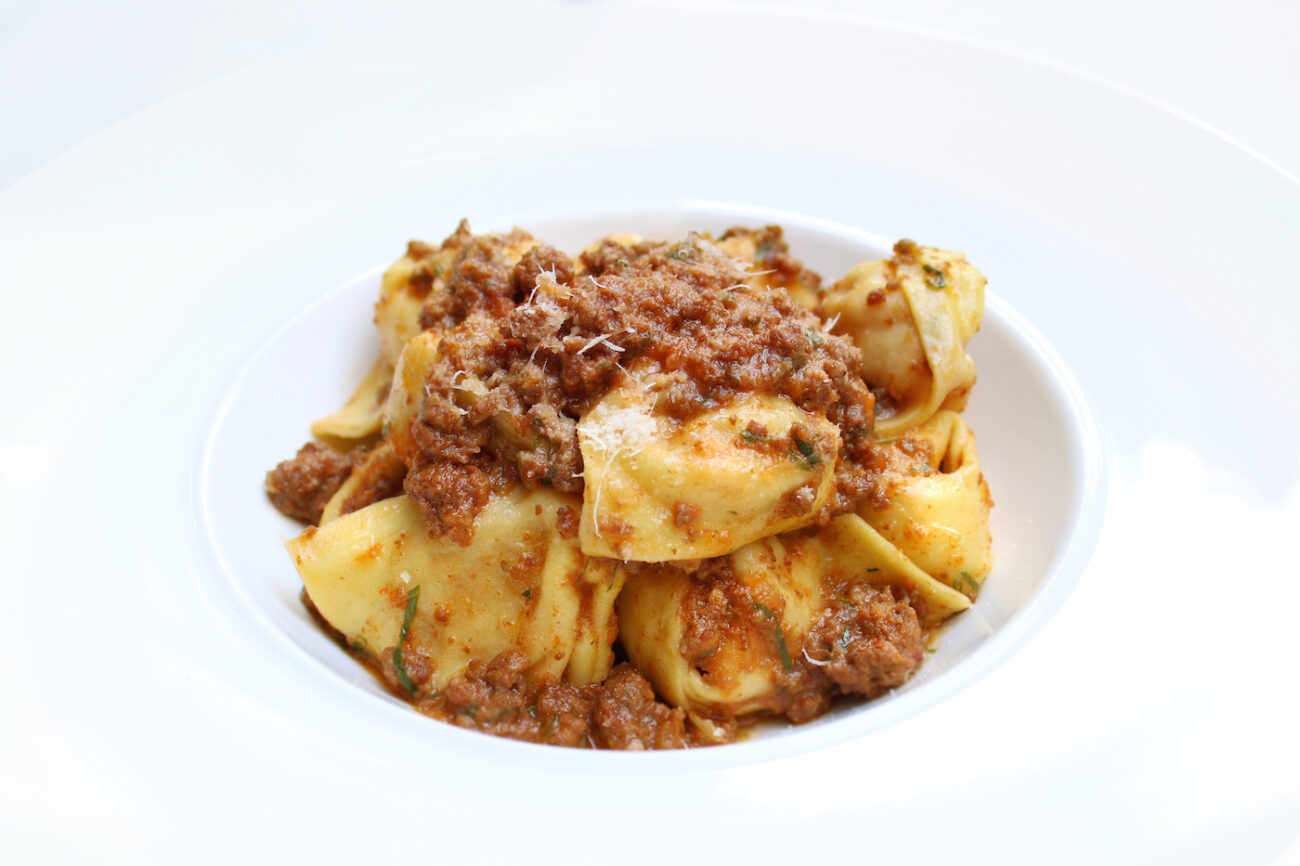In the Winter 2015 issue, we printed a recipe for Pumpkin Ravioli from Fontana at the Biltmore. Here, we’re providing Fontana’s Bolognese sauce recipe to pair with the pasta. Chef Galazzi adds someone wonderful sauce-making advice as well in the recipe instructions!
Bolognese Sauce from Chef de Cuisine Giuseppe Galazzi of Fontana
serves six
Ingredients
extra virgin olive oil, for the pan
1 large onion, cut into 1/4-inch dice
2 large carrots, cut into 1/4-inch dice
3 ribs celery, cut into 1/4-inch dice
4 cloves garlic
kosher salt
3 pounds ground beef (chuck, brisket, round, or a combination)
4 Italian sausages, skins removed
1-2 lbs pork jaws, chopped in 1/4-inch dice
2 c tomato paste
3 c hearty red wine
1 lb can of Italian peeled tomatoes
3 bay leaves
1 bunch thyme, tied in a bundle
pasta for serving
1/2 c grated Parmigiano-Reggiano
high quality extra-virgin olive oil, for finishing
Method
Coat a large pan over medium heat with oil. Add onion, carrots, celery, and garlic, and season generously with salt. Turn up the heat to medium-high and cook until all the water from the veggies has evaporated and they become nice and brown, stirring frequently, about 15 to 20 minutes. Be patient, this is where the big flavors develop.
Add the ground beef, the sausage, and the pork jaws, and season again generously with salt. Brown the meat. Don’t rush this step! Cook for another 15 to 20 minutes.
Add the tomato paste and cook until brown about 4 to 5 minutes. Add the red wine. Cook until the wine has reduced by half, another 4 to 5 minutes. Roughly squeeze the canned tomatoes over the sink to get rid of excess liquid, and add them to the pan.
Add water to the pan until it rises about 1 inch above the meat. Toss in the bay leaves and the bundle of thyme and stir to combine everything. Bring to a boil and reduce to a simmer, stirring occasionally.
As the water evaporates you will gradually need to add more, about 2 to 3 cups at a time. Don’t be shy about adding water during the cooking process, you can always cook it out. Making Bolognese is a game of reducing the sauce and adding more water as big rich flavors develop. If you try to add all the water in the beginning, you will have boiled meat sauce rather than a rich, thick meaty sauce. Stir and taste frequently. Season again with salt, if needed. Simmer for 2-2-1/2 hours.
During the last 30 minutes of cooking, bring a large pot of water to a boil over high heat to cook the spaghetti. Pasta water should always be well salted–salty as the ocean! Taste it! If your pasta water is under seasoned, it doesn’t matter how good your sauce is, your complete dish will always taste under-seasoned. When the water is at a rolling boil, add the spaghetti and cook for 1 minute less than it calls for on the package. Reserve 1/2 cup of the pasta cooking water.
While the pasta is cooking, remove 1/2 of the ragu from the pot and reserve.
Drain the pasta and add to the pot with the remaining ragu. Stir or toss the pasta to coat with the sauce. Add some of the reserved sauce, if needed, to make it about an even ratio between pasta and sauce. Add the reserved pasta cooking water and cook the pasta and sauce together over medium heat until the water has reduced. Turn off the heat and give a big sprinkle of Parmigiano and a generous drizzle of the high quality finishing olive oil. Toss or stir vigorously. Divide the pasta and sauce into serving bowls or a big pasta bowl. Top with remaining Parmigiano. Serve immediately.




